Tell me about your tree;
describe it, relate, narrate about it.
The tree you better know
The tree you see from your school or home window.
The most important tree for your natural environment
The tree…
You can realize:
a photo, a painting or a picture, a botanical schedule, a
description of possible use of men and animals, a poem, the stories
which the tree tells.
Or just writing the name of the tree (local and scientific).
The tree should be correctly localized, may be using services like
Goggle or Yahoo (on – line maps).
Words and pictures should be digitalized with common programs, for
which we can establish common standards.
With digitized documents you can create another document that contains them all (you can create a word file or pdf file); you can place this file in your reply to forum discussion "Your tree".
Or you can insert all images - one by one - in your reply and copy/paste here your text.
For examples:
http://win.teleparconord.it/2005/lavori/mi_cesari2d/mi_cesari2d.htm
http://win.teleparconord.it/scuole/sesto/alberi_forlanini.htm
http://win.teleparconord.it/lavoriscuole/quaderno_1acosta/quaderno.htm
http://win.teleparconord.it/sitogenie/altrilavori/manzoni4a/manzoni...
describe it, relate, narrate about it.
The tree you better know
The tree you see from your school or home window.
The most important tree for your natural environment
The tree…
You can realize:
a photo, a painting or a picture, a botanical schedule, a
description of possible use of men and animals, a poem, the stories
which the tree tells.
Or just writing the name of the tree (local and scientific).
The tree should be correctly localized, may be using services like
Goggle or Yahoo (on – line maps).
Words and pictures should be digitalized with common programs, for
which we can establish common standards.
With digitized documents you can create another document that contains them all (you can create a word file or pdf file); you can place this file in your reply to forum discussion "Your tree".
Or you can insert all images - one by one - in your reply and copy/paste here your text.

For examples:
http://win.teleparconord.it/2005/lavori/mi_cesari2d/mi_cesari2d.htm
http://win.teleparconord.it/scuole/sesto/alberi_forlanini.htm
http://win.teleparconord.it/lavoriscuole/quaderno_1acosta/quaderno.htm
http://win.teleparconord.it/sitogenie/altrilavori/manzoni4a/manzoni...
Visualizzazioni: 3098
Risposte a questa discussione
-
The Big Tree of our School Garden
In our school garden there's a big Black Poplar and its scientific name is Populus nigra.

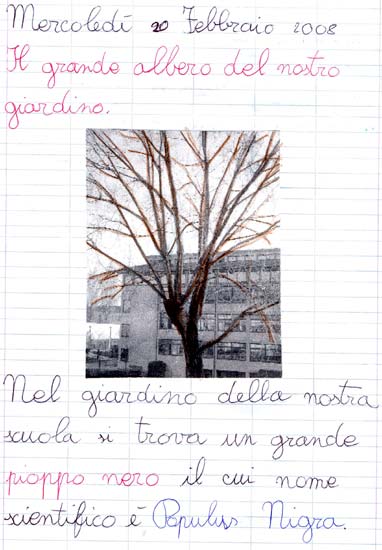
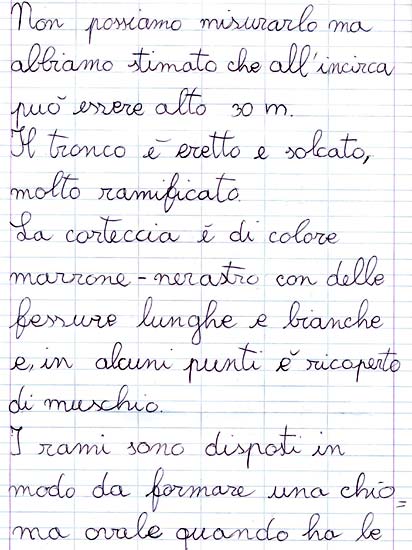
We cannot tell how tall it is but we think it could be about 30 meters.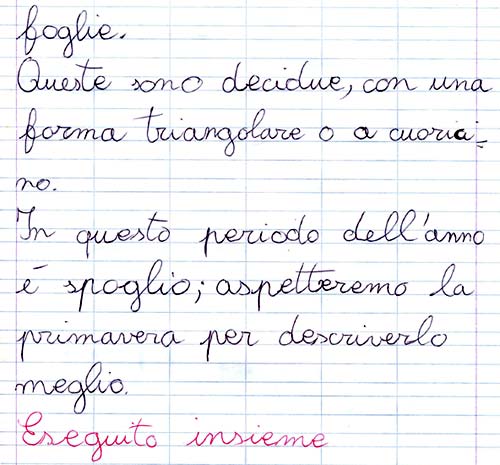
It has a straight and rough trunk with lots of branches.
The bark is somewhat brown-blackish with long and white cracks and some of its parts are covered with moss.
The branches are arranged in a way that they form an oval foliage during the time that it has its leaves.
These are deciduous leaves, with triangular or heart shapes.
It is bare at this time of year. We have to wait for spring to describe it better.
--------------------------------------------------------------------------------------------------------------------------------------------------------------
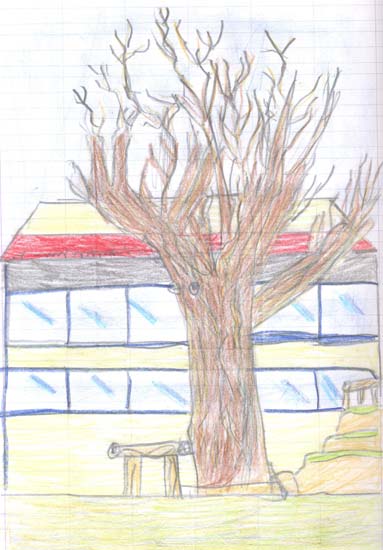
As the spring came, the leaves finally grow in our tree. At first, small buds sprout in its bare branches and was then followed by leaves.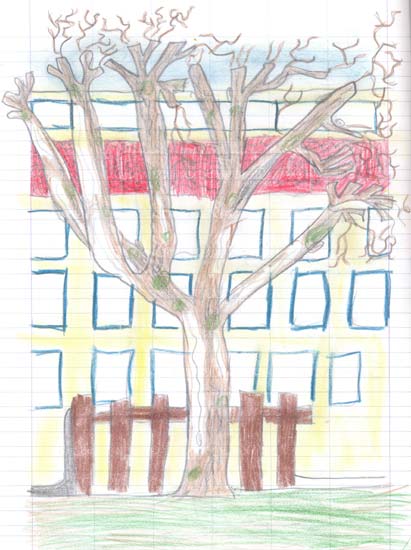
And then later, came lots of white and cotton-like sprigs: they are the seeds of the flower in a cluster which is called catkins or ament.
When they are ripe they fall from the tree and since they are very light they rise into the air.
We find it everywhere: in the garden, in our classroom, in our house and they are very hard to sweep away. They are also very irritating to the eyes!
Luckily, it rained and almost all of it had been wiped out.
Sometimes we find them in some hidden corners of our classroom which our janitors don't usually clean up.

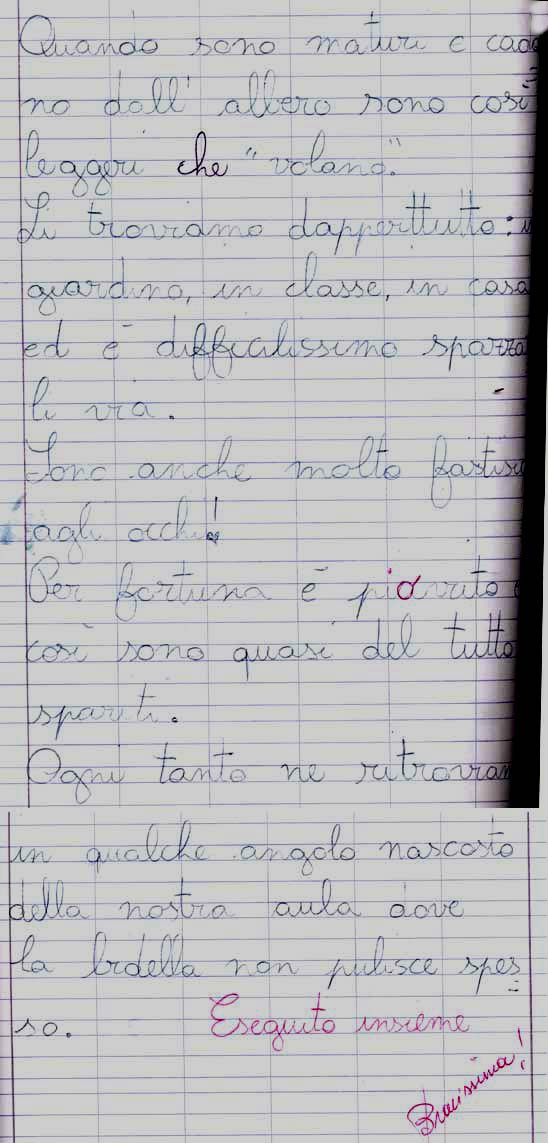

-
Dear Tina, this is a lovely project and one I can imagine the children had a lot of fun with. If I may ask how did you introduce the exercise to the children? Did you just asked them to describe the tree before you shared information with them? I am rather keen to learn about this as I think this is a very practical way of creating appreciation for trees and other features in nature within children. How do you deal with the issue of value (i.e. the value of trees) with children? Apologies for all the questions but it is really interesting to learn about these things. Hope to hear from you.
Elna de Beer
-
I’m a teacher of primary school and I teach Italian language (grammar)
We did the work on the tree as a descriptive text. This big poplar is placed in the garden of the school, we can see it from the window of the classroom and it is a friendly company for us so we decided to decribe it.
I will publish as soon as I can some poems that the children wrote about the tree.
We looked for information about the poplar on encyclopedia and on the net in order to find new word like bark, ament , etc
We did the description as a team work with my cooperation, considering that the children are really young (7 years old).
I hope your curiosity has been satisfied.
Looking forward to hear from you soon,
Tina
-
Five years ago we and other classes began a project in a part of the North Park behind one of our primary schools.
Our pupils, Massimo and we decided to explore that part of the Park and to find a place for us.
We chose an old big poplar: it has a long scar e a lot of holes on its bark. Massimo explained to us that a woodpecker had made the holes to catch the grubs called “rodilegno”.
We decided to choose a name for the poplar: “Picchiarello”. This name reminds of the woodpecker, in italian picchio; it means also “weird person”.
We walked along all the places chosen by the classes and called this path “Nature Street”. Every class thought about an activity to do in its place and marked it with a post.
We invented a story about Picchiarello, which became so important that we performed it at the end of the fourth school year.
Every school year we went to visit Picchiarello many times because we loved it. We asked the Park’s manager if he could make our place more beautiful: he put some benches around our poplar and a nice birds’ house on its branches.
We said goodbye to our poplar and our pupils at the end of primary school during a pic nic, making handmade kites fly, reading some poems and childrens thoughts, sowing flowers.
You can read about our experience and see the images on http://www.teleparconord.it
This year we have other pupils in the first year of primary school e we have already begun to explore the Park with Massimo for a new project: during this exploration we had a look at our Picchiarello from far away…
Lori and Ste

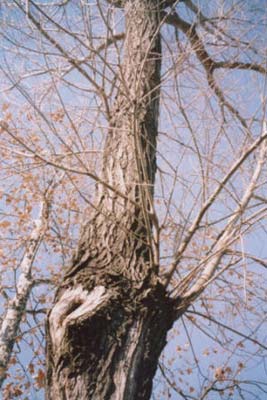
- Allegati:
-
Hello!!!
We too have visited the park and we have seen the black poplar of which we speak:Picchiarello
There were also poplars inhabited by peaks
Here are photos of the day
/p>
See you soon
-

The mimosa you see in the picture is called acacia dealbata and is located in the garden of teacher Tina, in his home in Nocera Inferiore (sa), was taken from his niece, Adriana
This mimosa has about 10 years
It about 9 m high, the leaves are bipennate dark green, the yellow flowers are grouped in clusters and give off a scent.
This is the description of Mary, second class, primary school Costa-Cinisello B(MI)
-
Tina Pannullo said:Hello!!!
We too have visited the park and we have seen the black poplar of which we speak:Picchiarello
There were also poplars inhabited by peaks
Here are photos of the day/p>
See you soon
-
sorry, I added no answer but only a copy. This year we change the tree for our project: We'll speak about new friend of ours next time!!! Bye Lori
-
Ok,we wait for next time
Bye Bye
Tina
-
We have a new friend, its name is “Sweet-heart”
During a sunny and windy afternoon in the winter we went to Parco Nord
We were looking for our tree to love, to keep like a friend during primary school’s years
We went around, we were looking for interesting trees
The first was a big popular, at the top there was a crows’ nest
The second was a “ailanto”, down there there was a group of robinia, one of them was covered with ivy
We walked on the grass and we saw a cherry-tree and a hazel tree. The last had a lot of little purple flowers
Then we looked a chestnut with little fruits
At the end…a little emotion: Lori saw our Picchiarello down there! Our new pupils didn’t know it, but Lori showed it to them.
So we sat down on the grass to decide which is going to become our tree - friend
The winner was…..the cherry-tree!!
We came back to see it: it was grey and its branches were like a hand; there was also a little nest-house
We said good bye to our tree and we came back to school.
At school we chose a name and we thought a game to play under our tree in the spring.
We photographed it covered with white shining flowers a week ago.
Lori e Ste
© 2016 Creato da Massimo.
Tecnologia![]()




